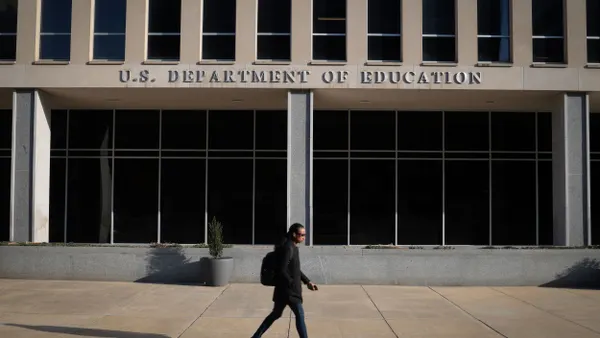From spending weekends cleaning up beaches to teaching younger children to read, service learning projects are often required by schools, with students asked to volunteer their time and get involved in lives other than their own.
Yet experts say some experiences can have more of an impact than others. The key is knowing how to dovetail what a student is learning in school with the volunteering they may do outside the classroom.
"It helps to tie in what students are learning in the classroom with volunteer work in the community,” wrote Basil Sadiq, who works in marketing and engagement with San Francisco-based volunteering recruitment site VolunteerMatch, in an email to Education Dive. “For example, they might spend a week learning about global warming in school. The following week, they could visit a park and help clean it up as part of their efforts.”
These experiences not only cement what students are being in taught in schools, but also teach them new abilities while enforcing social-emotional learning skills such as empathy, wrote Laura Walker, a professor at Brigham Young University, in an email to Education Dive.
Walker, along with two researchers from the University of Missouri, studied pro-social behavior in adolescents for a 2017 paper in the Journal of Research on Adolescence, looking at the ability for this conduct to grow over time. Schools that foster this behavior can eventually see fewer behavioral problems, she said. And volunteering is a great way to impact pro-social skills, depending on the kind of projects selected.
“If students are just wiping chalkboards and stacking books, this likely will not impact empathy,” Walker said. “But if students are working with individuals who are less fortunate and are able to see the impact they can have on others, this can impact everything from empathy, perspective taking, self-esteem — and can even protect against problem behaviors.”
Getting involved
Even as districts from California's Burbank Unified School District to Wisconsin's Barneveld School District require their students to complete service learning hours to get a high school degree, volunteering on the whole is actually on the decline among people across the U.S. — and has been for the past 10 years, said Sadiq.
That doesn’t mean opportunities aren’t available. Schools may need to step up, and support students in creating matches with organizations, or encouraging students to go online on their own to find groups or community sites that interest them.
While VolunteerMatch, for example, works with non-profits to help them find volunteers, other groups, like WE Schools, work directly with schools to help with service learning requirements. The group looks for a more natural fit between schools and volunteer projects so those projects might be tied to curriculum.
The organization can provide resources that dovetail with state standards, or it can tie projects to classes such as Advanced Placement courses, said Catherine McCauley, strategic director of education for the Toronto-based WE Schools, in an email to Education Dive.
Volunteering vs. service learning
There are some who view students completing a service learning requirement as not really in the spirit of true volunteerism, and that, when made to give their time as part of a graduation requirement, students are not tapping into what being a volunteer really means.
Walker admitted that when someone is forced to do something, it’s never as effective as choosing that option for themselves. However, she said that whether students volunteer because they want to or because the activity is part of a class, there is a positive impact that’s associated with future volunteering. In other words, it’s always better to do something rather than nothing.
“In my opinion, however, teens need to start somewhere and get exposed to the benefits of service somehow,” said Walker. “Once they get the opportunity, they will be hooked!”










